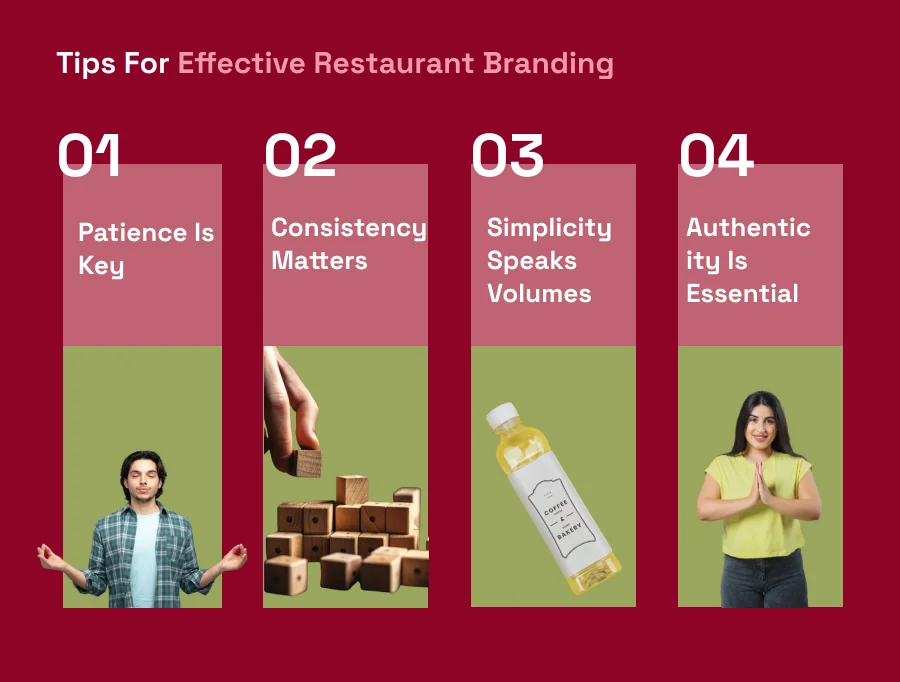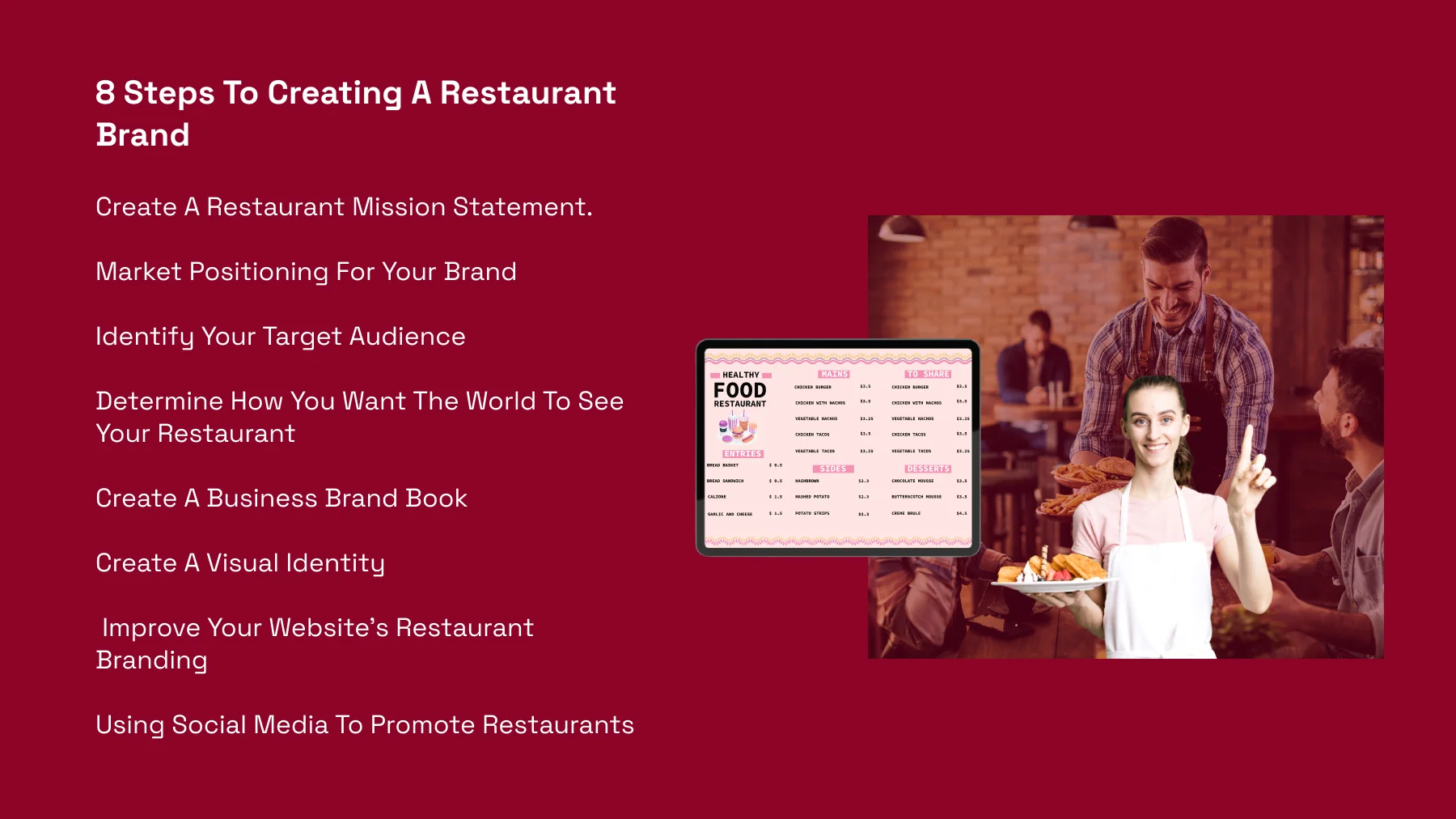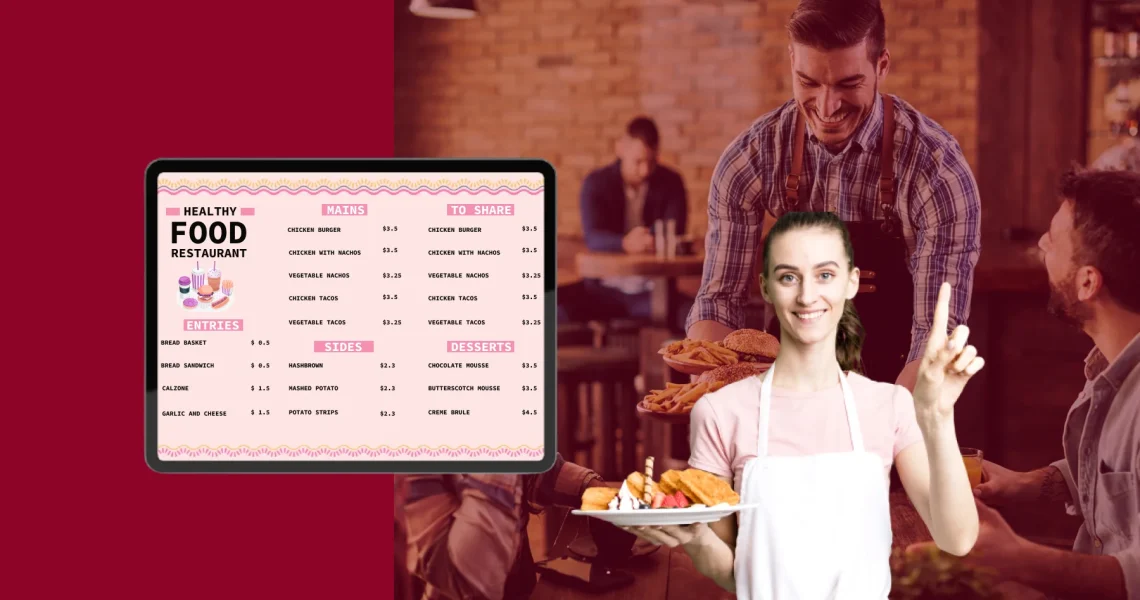Branding Your Restaurant: Expert Tips and Tricks to Stand Out
Innovating and implementing an effective restaurant branding strategy can help you stand out from your competitors.
Think about it: As of 2023, there are 749,404 quick-service and full-service restaurants in the United States alone.
Check out this comprehensive blog to learn the best branding strategies for your restaurant.

Restaurant branding is a collection of elements that comprise your restaurant's identity, values, mission, and personality. All of these characteristics should influence how your restaurant looks and how it communicates with customers. The ultimate goal of restaurant branding is to establish a consistent image and an emotional bond with customers.
Advantages of Restaurant Branding
When you think of pizza, certain restaurants pop up in your mind. This is because they have invested in branding and have consistently promoted their image through marketing. Check out these benefits to see why restaurant branding is so important:
- Customer loyalty: branding can help you develop an emotional connection with your customers, which, when combined with great food and a pleasant experience, will keep them coming back for more.
- Consistency: Restaurant strategies for branding set the tone for all future marketing and help to create a consistent image that customers value. For -example, suppose you use a funny and friendly tone of voice on social media now. In that case, you won't be able to communicate professionally tomorrow since it will confuse and deter people.
- Differentiate yourself from the competition: you want your restaurant to stand out from the crowd so that people will choose you when they are seeking a place to eat or order food. Branding will help you attract the right customers.
- Credibility: Food is a touchy topic. You would not eat at a restaurant that did not seem trustworthy. Branding will boost your credibility if you keep people informed about the fresh ingredients you use, sanitary food preparation, and much more.
8 Steps to Creating a Restaurant Brand
1. Create a restaurant's mission statement
Your mission statement or value proposition should serve as the foundation for your culture, product, environment, employees, and customers' relationships with your business. It should be definitive and reflect your restaurant's distinct perspective. A mission statement does not have to be lengthy; one or two phrases would suffice.
Answer the following questions in order to do so:
- So, what do we do?
- What motivates us?
- How do we do it?
- What do we want to accomplish?
- How are you going to do it?
The answers to these basic questions will provide the foundation for your brand by identifying your beliefs, purpose, and values. Answering these questions will also allow you to establish your unique selling point (USP), which is the key reason customers choose your restaurant over the competitors. Having your clearly defined USP written down and placed somewhere prominently is useful since you'll want to refer back to it throughout the process of developing your brand.
Related: How to Start a Profitable Restaurant: Restaurant Opening Checklist
2. Market positioning for your brand
Now that you know your “why," it's time to figure out your “what" and “where." This is referred to as brand positioning (how your brand differs from competitors), and it will impact where your restaurant ranks in the minds of your customers. By taking the time to rightly position yourself in the market, you can better explain your value to prospective customers. To position your brand, you must first define the four Ps.
How to Market Your Restaurant Brand
- Price— creating a pricing strategy for your restaurant menu is a good starting point for effectively positioning your brand in the market. It will also allow you to more precisely define who your true competitor is.
- Product—the contents of your menu, the design of your menu, the theme of your restaurant (if you have one), and the culinary experience you will offer.
- Promotion- It refers to how you will market your restaurant to attract customers.
- Place—your restaurant's physical location.
These tools or frameworks make it simple to put down your thoughts step by step. The ultimate result is an excellent overview of your brand and business.

3. Identify your target audience
Following the mission statement, the next logical step is to determine who your customers will be. This is dependent on factors like location, menu, design, and ambiance.
If your restaurant is located near a university campus and serves affordable food and drinks, it is obvious that the majority of your customers will be university students. Assume you've launched your restaurant in a wealthier neighborhood near corporate office buildings. In that case, you might become the go-to spot for classy business lunches.
Defining your target audience will assist you in learning how to communicate with your customers. It will also provide valuable information on how to improve your customer service and avoid negative feedback.
4. Determine how you want the world to see your restaurant
Aside from menu prices and location, a restaurant's brand voice, or what kind of restaurant you will be to your customers, is important. Will you be fun and quirky, or serious and elegant? You will learn how to communicate with your target audience live on your website, and on social media based on the traits you choose. With Restaurantify you can create a stunning restaurant website. These restaurant branding ideas will eventually seep into your physical branding.
5. Create a business brand book
Maintaining consistency with your restaurant identity is just as important as serving outstanding food and providing excellent dining service. As you create a relationship with your customers, you want to enhance and emphasize your brand with each engagement.
Whether it is online (on social media, your restaurant website, in your tech stack, or paid advertising) or offline (such as menus, tabletop design, or uniforms), the way your brand looks, talks, and acts must be consistent. Because you can't control how or where your consumers or potential customers first come into contact with your brand, you'll want to ensure that you provide a consistent experience, no matter what.
Creating a brand book is one of the most effective strategies for maintaining brand consistency, commonly known as “staying on brand." A brand book, often known as your brand guidelines or style guide, is a set of rules that define your brand elements such as voice, tone, colors, and position. The goal of a brand book is to have your entire crew on the same page when it comes to restaurant branding.
Include the following in your brand book:
- The fonts and typefaces you use on your menu, in your logo, and in all of your designs.
- The photographs and designs that can be used in your designs and other promotional materials for your restaurant.
- The Dos and Don'ts of Speaking with the Media, as well as an explanation on how to communicate about your external positioning.
6. Create a visual identity
Branding is more than just design. You should also keep in mind that your overall visual appeal says a lot about your business.
For consistency, you must apply your restaurant's visual brand to all design aspects.
These include your logo, interior and exterior designs, color palette, menu design, employee uniforms, website, and social media layouts.
This allows current and potential consumers to easily recognize your restaurant with ease.
McDonald's simplistic visual identity and famous golden arches symbolizing a large M is a good example.
Take note of how the business uses red and yellow in all of their ads, physical or digital menus, interior and external decorations and decorations, and even on their staff uniforms.
This strong visual identity is so constant across all of their stores that the two-color scheme is almost instantly associated with the brand.
7. Improve your website's restaurant branding
A good website boosts brand awareness and promotes your restaurant's food and services to existing and potential consumers.
This is because 81% of customers look at restaurant websites before deciding where to eat or placing an order.
You'd now like to publicize a website that would immediately hook visitors and entice them to make a reservation.
As a result, you must also make your website as user-friendly as possible to provide a pleasant experience for your users.
Make the buttons and tabs functional, provide simple booking or ordering systems, and integrate various payment methods.
8. Using social media to promote restaurants
A strong social media presence allows you to reach a larger audience, expand your business network, and improve your digital marketing efforts.
Platforms such as Facebook, Instagram, and TikTok will help you highlight your menu selections and latest promotions.
You can share delicious images of your food, behind-the-scenes videos of your kitchen preparations, and more.
What's nice about this is that you've successfully extended your restaurant brand and developed a strong social media marketing strategy for your business.
Conclusion
The concept of restaurant branding may seem hard at first, but it is essentially about building a clear and consistent identity that will help your restaurant stand out among competitors. Follow the steps outlined to build the ideal branding for your restaurant and keep authenticity in mind.
KEY TAKEAWAYS!

